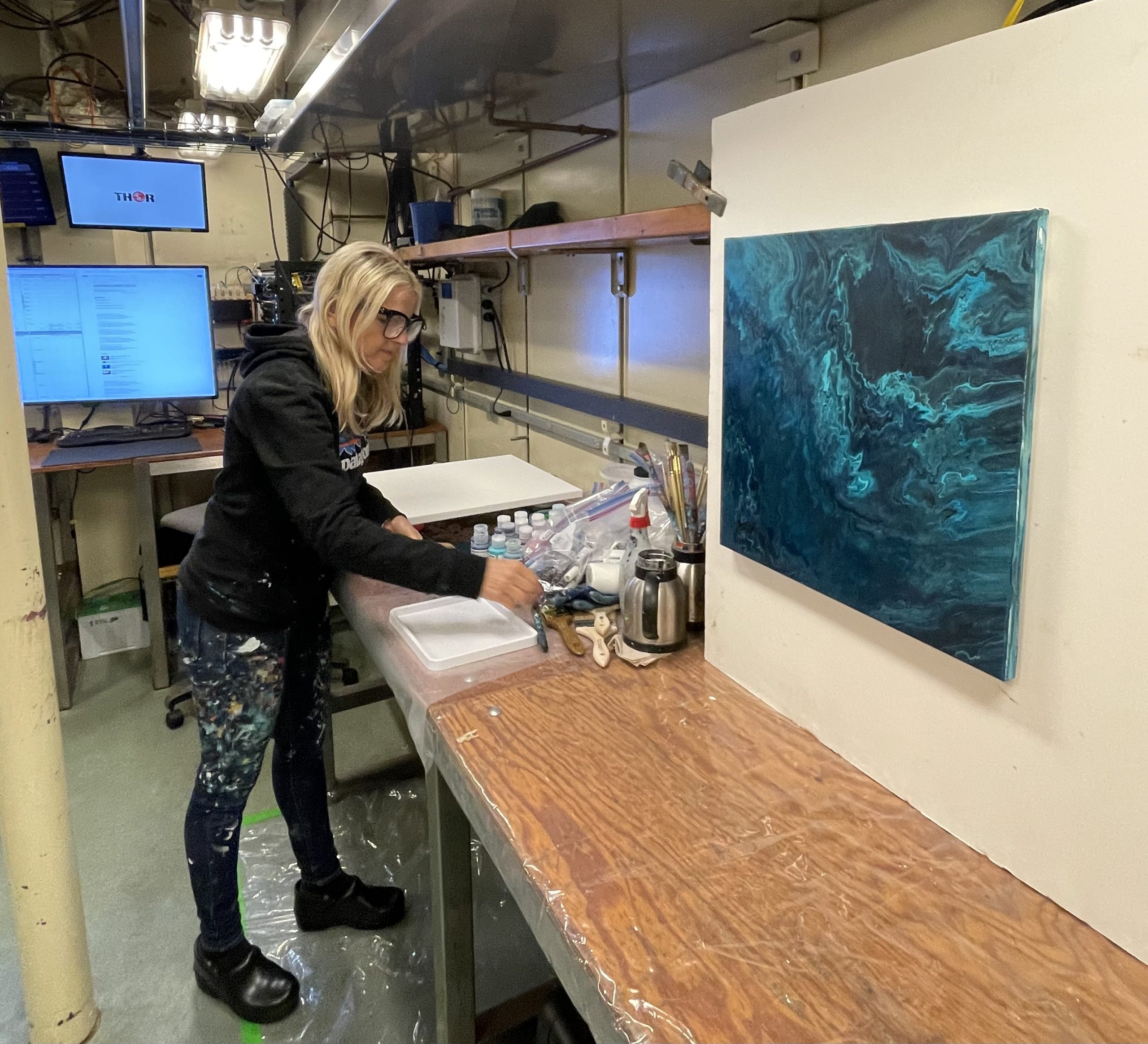Kama’ehuakanaloa Seamount Hydrothermal Vent Expedition: Expanding Early Career Involvement
Early career researchers from various institutions set sail aboard the Kilo Moana Research Vessel today to visit Kama'ehuakanaloa Seamount (formerly known as Lō'ihi), the youngest volcano in the Hawaiian-Emperor Seamount Chain.
This NSF-funded collaborative research expedition, led by WHOI Senior Scientists Chris German and Jeff Seewald, is investigating the impact on the subseafloor hydrothermal circulation system of seismic episodes in December 2021 using the remotely operated vehicle (ROV) Jason/Medea. This trip builds on a 2018 expedition funded by NASA and NOAA to explore the geology, energy, and microbial communities associated with the seamount.
To expand on the core research objective of this expedition, an open call went out for early-career researchers (ECR) to join and pursue complimentary science questions, while also gaining hands-on experience conducting hydrothermal vent research using Jason. Nine early career researchers and one artist-in-residence were invited to join the expedition, the majority of whom have not been on a research cruise before.
The scientific goals of the ECR participants range from mapping the seamount to documenting the viral communities within hydrothermal vent fluids. Here is a sampler of the research objectives ECR participants will be exploring:
- Emma Brown of Arizona State University will investigate how the vent fluid microbial community responds to different types of carbon sources.
- Soisiri Charin of the University of Minnesota will quantify the potassium isotope compositions of low temperature hydrothermal fluids to gain a better insight in the global marine potassium cycle.
- Zachary Clayton of Arizona State University will use the temperature trends at the hydrothermal vents to determine how the energy availability and vent fluid chemistry changed over time.
- Andy Heard of WHOI will use stable metal isotopes to track redox processes in context of low temperature hydrothermal environments.
- Isaac Keohane of the University of South Carolina will use a multibeam sonar on Jason to determine if the crater and hydrothermal vent fields at Kama'ehuakanaloa have changed since the area was last mapped, particularly since the recent seismic episodes.
- Sarah Lamm of the University of Kansas will collect rock and sediment samples to study the mineral structure of iron oxides at the seamount.
- Cherise Spotkaeff of the Hawaiian Pacific University will describe and characterize the viral community found in the seamount vent fluid using various bioinformatic techniques.
The exploration will be creatively captured by Rebecca Rutstein, the artist in residence, whose work is inspired by the natural world and the multitude of hidden systems lurking in the deep sea.
Follow along over the next two weeks as we document the complex systems hosted by the Kama'ehuakanaloa Seamount.


